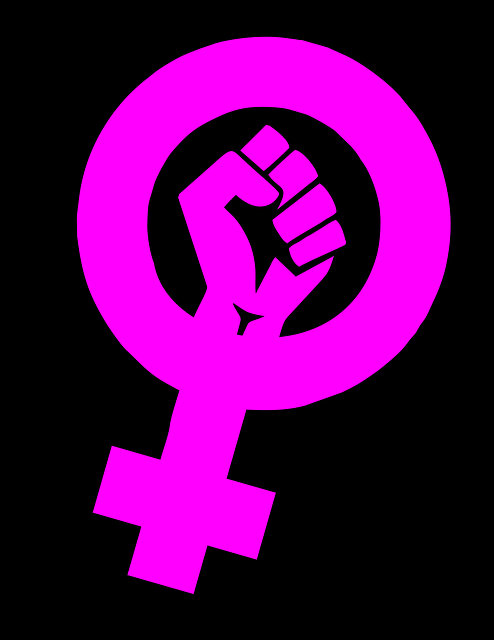
“Language is the road map of a culture. It tells you where its people come from and where they are going.”
Rita Mae Brown
The words that we weave each day, with the flavour of our thoughts, become the defining factor of our individuality. It wouldn’t be an overstatement to say that language is the flagship of human civilization, an instrument that has been used to communicate and encapsulate the essence of the culture it follows. It bears the enormous power to shape and mould views, making it essential to either nourish stereotypes or contract them a little.
Among all other kinds, language bears the brunt of gender stereotype and latent bias against women. If we try to trace the root of these stereotypes that have taken a throne in the spoken form, we have to travel back to the beginning of linguistics or perhaps to the beginning of civilization when gender roles started taking form. Most of both the western as well as Indian cultures thrived on male superiority and female subjugation. Considering that male members of the household were responsible to fetch the livelihood by working outside the premises of the house, the natural outcome of this distinction was the concentration of power in the hand of the men. With men establishing their position in the major spectres of life from politics, philosophy, bureaucracy to literature, the languages also started taking shape with the reflection of a polarized community with an institutionalized gender bias. This became the reason that the shadow of the male-dominated society with distinct gender roles contributed to the intricate differences in the male and female connotations, the repercussions of which can be still felt in the 21st century.
Language and Gender
The gravity of the situation can be understood if we look at the way the languages have been formed with their roots buried in the mud of gender stereotypes. As we know every language has assigned words for the members of both the sexes. Genderless languages do not have gender for nouns or personal pronouns whereas grammatically gendered language has gender connotation for every noun. In natural languages which includes English, both the sexes can refer to nouns, pronouns, and articles. According to the Global Gender Gap Index of the World Economic Forum, countries with grammatically gendered languages did poorly in the index as compared to the natural gender language or genderless languages. Now the point to note is that, even in a language that does not have a grammatical marking of sex(natural gender language) such as English, the gender bias can be perceived by studying the semantic and structure of the language.
While studying semantics we can see that in the very structure of English, the so-called less powerful group is often compared to the more powerful group-for example, using sentences such as “in comparison to men, the women population is decreasing” instead of using sentences like “in comparison to women, men’s population is in a surplus” . This is often known as the Linguistic Normativity Effect. This makes ‘men as a group’ the centre of every argument and also the centre of the entire language.
The tendency of creating men as the subject lowers the representation of women in language. Luce Irigaray, a French Feminist philosopher also pointed this problem out where she stated that it is only when women can occupy the position of the subject in the language that women will have an equal representation in it. A very minute example of this tendency can be taken if we ponder upon the statement- ‘women should be equal to men’. In this simple five worded sentence we might seem simple, yet, a closer inspection will reveal something unusual. The statement surely emphasizes the importance of gender equality but it also makes men the subject of importance and the epitome standard that women should reach.
According to an Oxford Research on ‘Gender Bias and Sexism in Language’, “The linguistic choices made by the speaker (such as the use of stereotypical consistent words) affect the cognitive processes of the listener and this occurs automatically.” This means that whenever an individual uses masculine generics, it leads to an automatic reaction in the mind of the individual. The individual begins to envision men in every category possible. For instance, in a general conversation, it is very common to denote ‘he’ when we are talking about a ‘boxer’, or even ‘he’ with the ‘President’.
Words and their association
The story doesn’t end with a biased language structure, it moves forward with specific connotations. In English, we can identify that there are pronouns and nouns which are masculine in nature but can be used for both the gender. This includes words such as chairman, policeman, fireman, and even mankind. These words give rise to an increasing mental image of the male figure and simultaneously leads to the disappearance of women figure from the mind of an individual. Along with this, some words are feminine yet, an agent that reinforces gender stereotypes. For example, we use career women and working mothers but there is no prevalent use of the vocabulary of careerman and working father.
Another interesting way in which male focus of languages can be perceived is by evaluating the number of words that denote men (him, his, he) which turns out to be greater than that of women (she, her). It can also be seen that languages often develop specific connotations as a result of the social setup. things become problematic when this specific connotation becomes restrictive and causes stereotypes. A leading example in this aspect would be the idiom- ‘To man up which simply means to be strong or fearless. This leads to a dual problem, first, it leads to negative masculinity as it deprives men of feeling normal emotions, and second, it denotes that women innately cannot be equated to strength or courage.
Gender-fair language
The pressing imprint of gender stereotypes on language can only be fought with the use of a language that is fair to all gender. There are a few ways of walking this path- from feminizing words (using both he and she instead of just he) to neutralizing the existing words (using businessperson instead of businessmen) to finally avoiding gender marks (mother instead of working mother).
This new wave of gender-fair language stands as our ray of hope to encompass all the gender types equally. It stays as the path that will take us to a language where we instinctively add she with the use of he, when we are unaware of the gender of a specific profession. It will guide us to the way which will help us become entities who consciously avoid terms such as manning up, having balls and sitting like a lady. It will lead us to a brighter future, to a step closer to equal representation and fairness.
Srijoni Hore is presently pursuing her master’s from the University of Delhi in Philosophy
GET COUNTERCURRENTS DAILY NEWSLETTER STRAIGHT TO YOUR INBOX















































